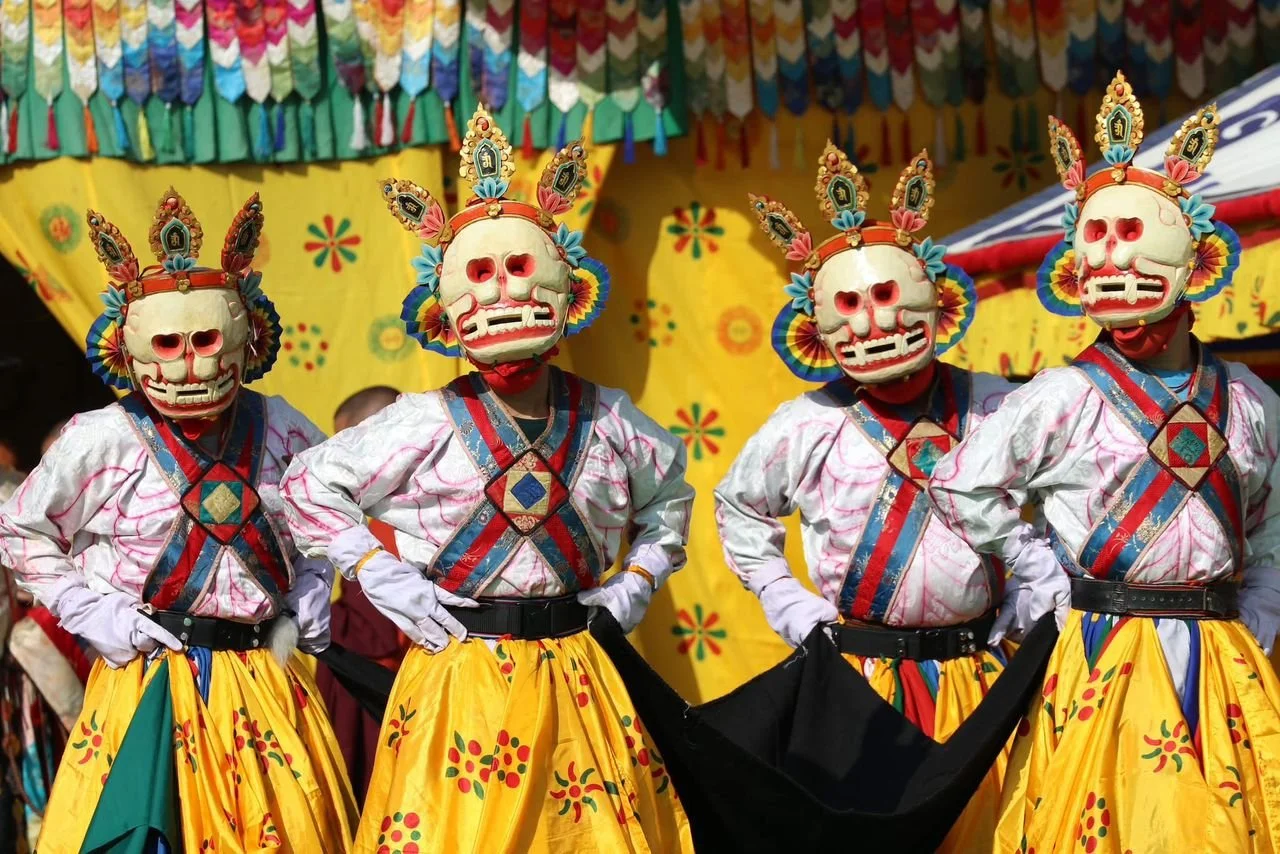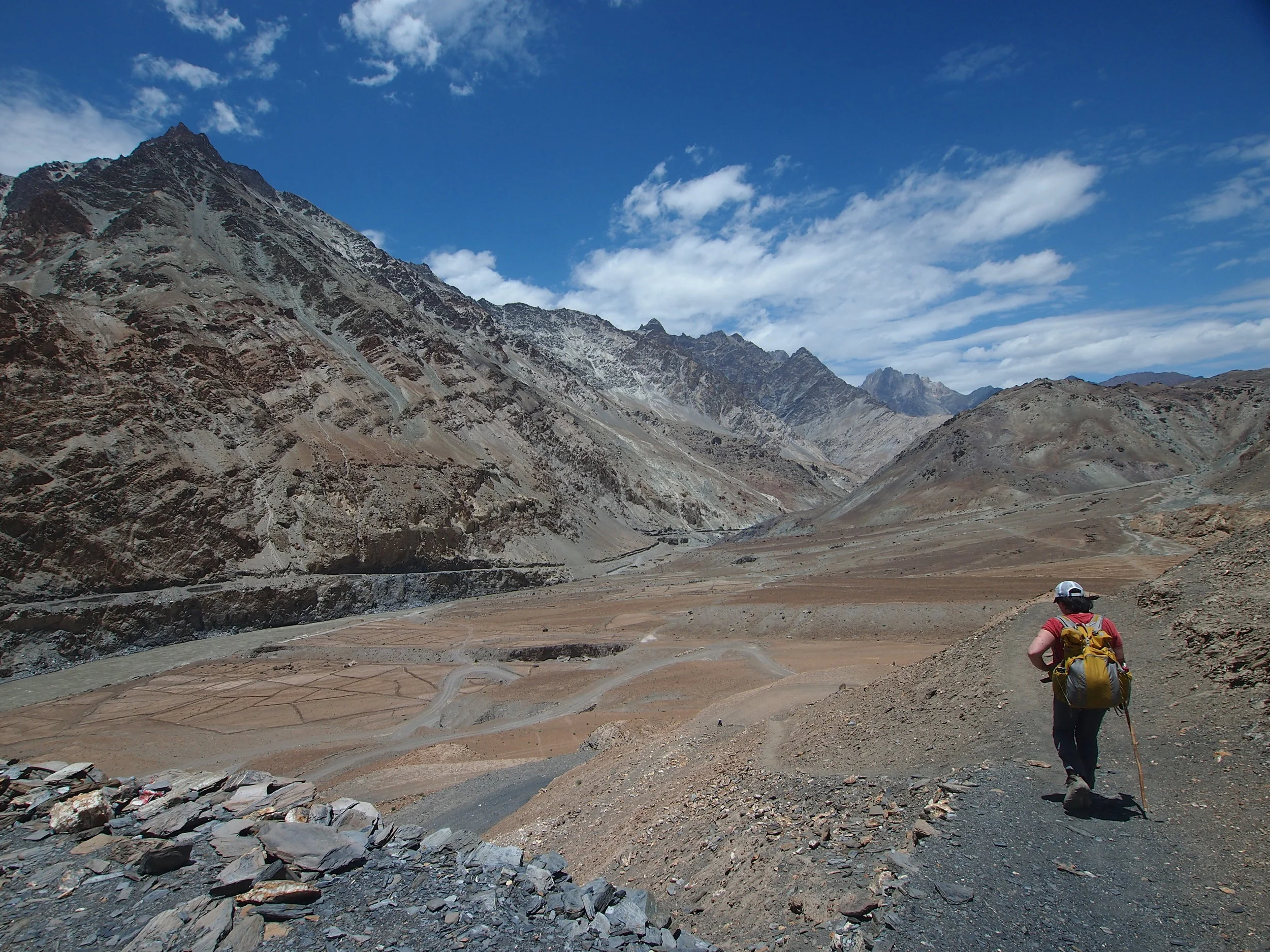Ladakh is a high-altitude region of northern India that’s known for its fabulous mountain scenery, brightly coloured lakes, and well-preserved Tibetan Buddhist culture. It’s a bucket-list destination for many adventurous travellers, and for many good reasons (the temples, monasteries, and festivals are just a few).
But, although it’s much more accessible these days than it used to be, Ladakh is still quite an isolated and cut-off region of India, and some seasons are certainly better—and more comfortable—for visiting than others. Read on for our insider knowledge of the best time to visit Ladakh.
Summer (June-August)
Summer is by far the best time to visit Ladakh for most purposes, and it’s when the region sees most visitors. Days are hot in the summer—around 25°C in the small capital of Leh, at 3500 metres—although temperatures drop a lot at night, and depending on altitude. The sun is also very strong at this altitude, so be very vigilant about wearing sunscreen.
Summer is the best time for most activities in Ladakh, because not only are the temperatures most pleasant, the roads are generally clear of snow and ice. Hiking is a popular activity in Ladakh, and there are networks of homestays where you can experience the local Ladakhi way of life. White-water rafting is also popular, on the Zanskar and Indus Rivers, and while water temperatures are always cold (you’ll need a wetsuit), it’s only possible to do this in summer. General sightseeing around the temples, monasteries, and high-altitude lakes of Ladakh is also best in summer.
If you happen to be in Ladakh in late June/early July (the dates shift according to the lunar calendar), the Hemis Monastery Festival is a must-visit. Hemis Monastery is one of the most important monasteries in all Ladakh. Its annual festival—where monks perform ancient stories—is a riot of colourful masks and costumes.
A lot of accommodation in Leh, as well as elsewhere in Ladakh, is only open during the summer. While you may find limited accommodation options at other times of year, a lot of Ladakh shuts down outside of summer.
Ladakh is also most accessible in summer, as you can get there by flight or overland. Most travellers, especially those short on time, will prefer to fly from Delhi, as this is by far the most comfortable option. But if you’re doing a long tour of India and covering the country overland, the high mountain passes from Srinagar (Kashmir) and Manali (Himachal Pradesh) are an alternative way of reaching Ladakh. These roads are only open from June to August, as they’re snowed in at other times. While the long (16-hour-plus) journey can be uncomfortable, it’s spectacularly scenic—perhaps one of the most stunning road trips in the whole world.
Another major advantage of visiting Ladakh in summer is that it’s one of the few places in South Asia that is at it’s best at this time of year. While Delhi and the North Indian plains swelter in summer, South India is awash with heavy monsoon rains, and Nepal and Bhutan are similarly wet and soggy, Ladakh is perfect: dry, clear, sunny-yet-cool, and open for business.
Shoulder seasons: March-May and September-October
Winter is long in Ladakh, and enclose the relatively short summer. The motorable high passes of Ladakh are often covered in snow until early-mid June, and become snowbound again by early-mid September. If you want to visit Ladakh during these shoulder seasons, flying is the only way. Temperatures will be cold (bring a good jacket, hat, and gloves, and possibly even your own winter-weight sleeping bag), but you may still experience some nice sunny days. By the end of April, the days can be very sunny and pleasant in the day.
You’re likely to be quite limited in where you can go during these times, and will have to stick to the areas around Leh, at 3500 metres altitude or less. It will be difficult (or impossible) to travel to the high-altitude lakes, such as Pangong Tso and Tso Moriri, as the high roads getting there will be blocked. But, there are still many beautiful sights not far from Leh (such as Shey, Hemis, Thiksey, Alchi, and other monasteries), and some accommodation will be open. Trekking will largely be out, as the conditions will be too cold at higher altitudes, but some day walks may still be possible.
While the shoulder seasons don’t offer such a range of experiences as the summer, there is still plenty to see and do, enough facilities open, and far fewer tourists than during the summer. If you come prepared for colder temperatures, you’ll still have a great time.
Winter (November-February)
Winters in Ladakh are very cold. The region is surrounded by very high mountains (the edge of the Himalayan chain) and sits at a very high altitude. It’s not uncommon for temperatures to be as low as -20°C in Leh, and even colder at higher altitudes. Tourist facilities essentially shut down in winter, and you’re unlikely to find accommodation. Pipes freeze, so you can forget about hot showers! If you do travel to Ladakh in winter, you’ll be restricted to Leh and its immediate surroundings, for the most part.
If you’re an avid wildlife enthusiast, there’s one activity that’s best in winter: snow leopard tracking. These rare animals live in Ladakh’s Hemis National Park. Around 200 of them are predicted to live here. While they’re hard for the untrained eye to spot, by joining a tour with a trained naturalist, you’ll have a good chance of spotting them. Such tours can be taken at any time of year, conditions are best from October to April. Beyond The Clouds organises small group tailor made snow leopard tours with expert guides.
Another winter-only activity that should only be attempted if you’re extremely adventurous and very experienced at high-altitude winter trekking: the Chadar Trek. This trek through the Zanskar Gorge follows the frozen Zanskar River. It has traditionally been the only travel route for locals in the area in winter, but has also gained recognition by international travellers in recent years as an extreme adventure destination. Along the way, you’ll see spectacular ice formations, dramatic cliffs, and a truly dramatic landscape that few travellers will ever get to experience.
Our advice, though: this landscape also looks stunning in summer. Visit then.
Read more informative articles about travel to Ladakh:
For more information about Ladakh and to explore travel options email info@beyondtheclouds.org.nz or visit www.beyondtheclouds.org.nz


























